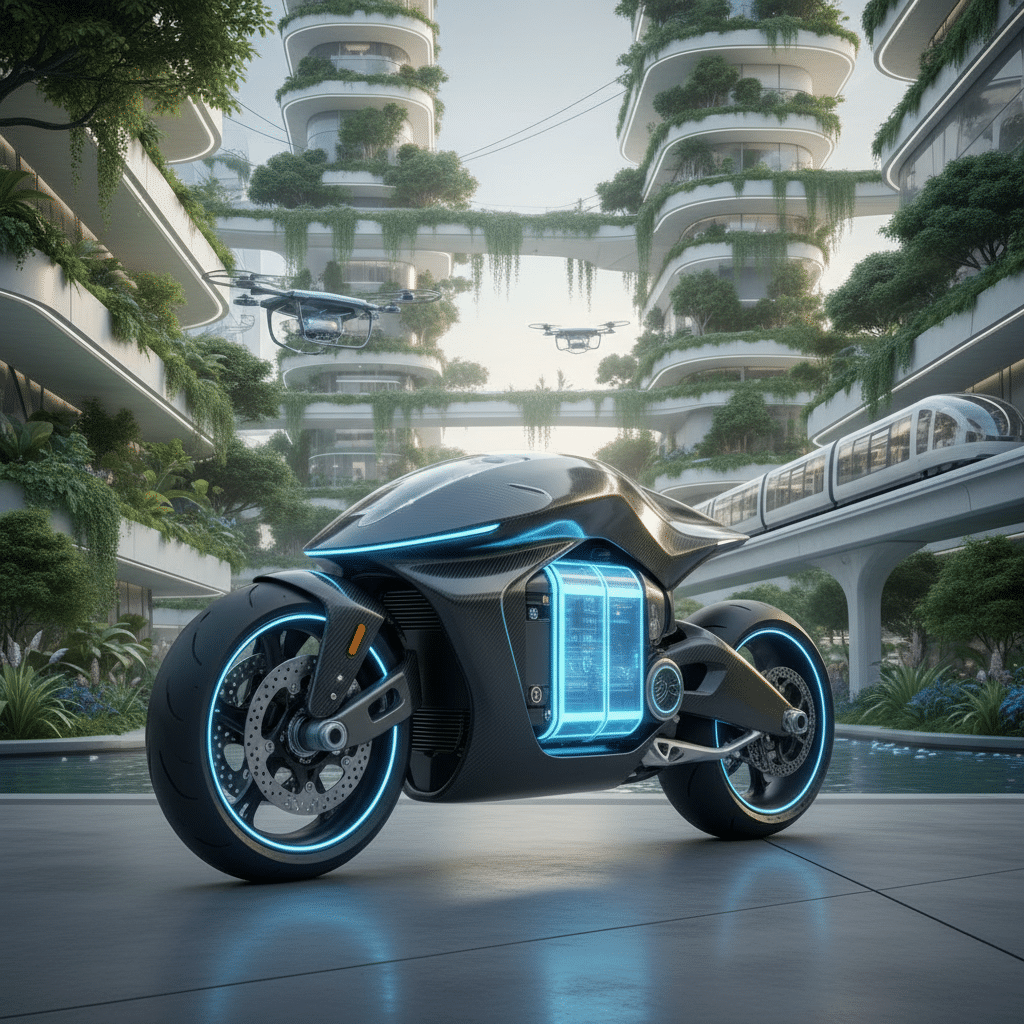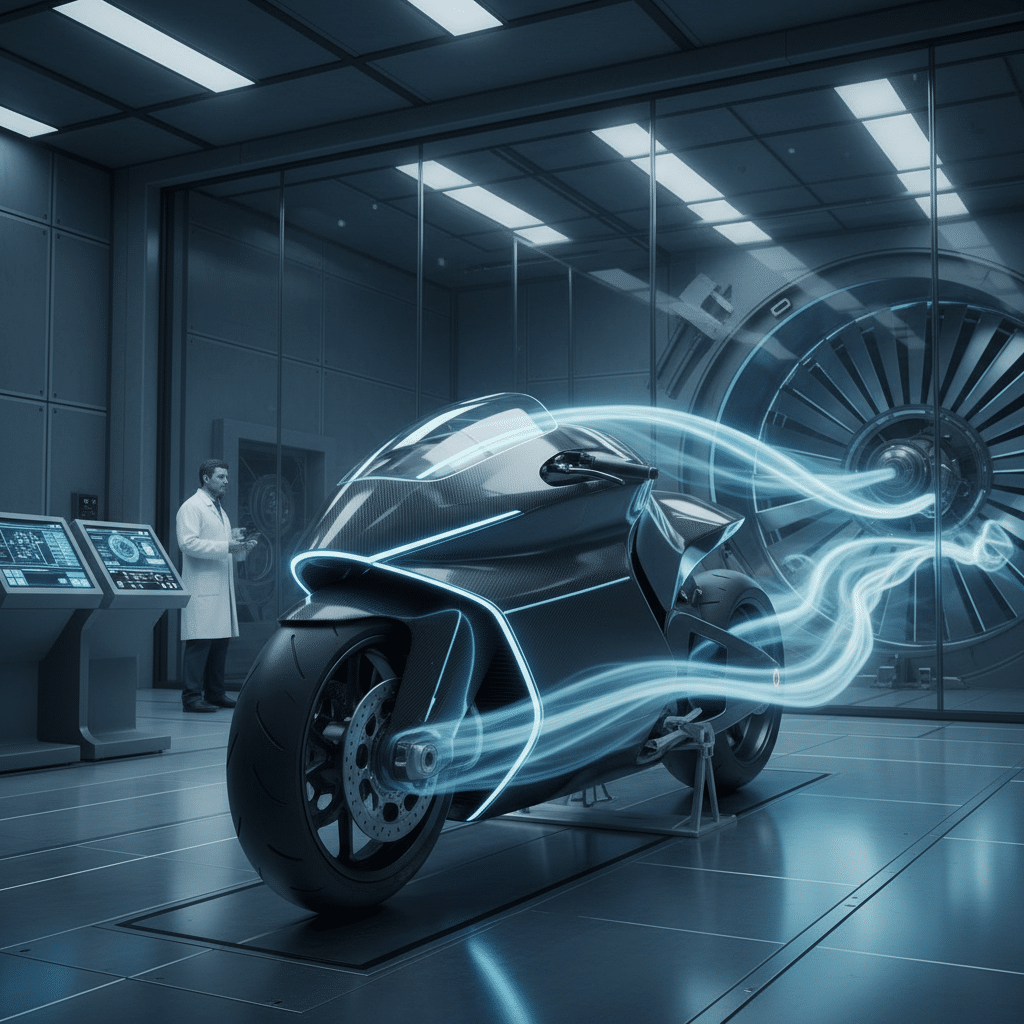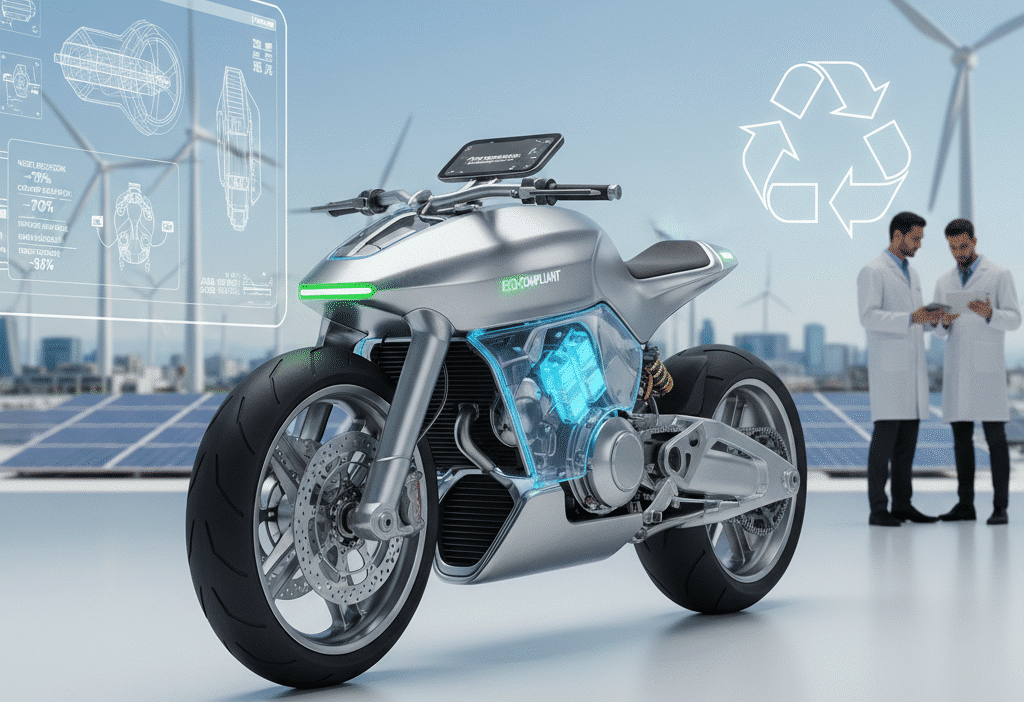Get ready to feel the rumble of change, because the world of motorcycles is experiencing an exhilarating transformation! Far from being a hindrance, environmental regulations are sparking an incredible wave of innovation, profoundly influencing the impact of environmental regulations on motorcycle design. This isn’t just about cleaner emissions; it’s about reimagining performance, enhancing rider experience, and pushing the boundaries of what two wheels can achieve. Forget the idea that ‘green’ means ‘boring’ – the bikes rolling out today and tomorrow are more exciting, efficient, and technologically advanced than ever before. Let’s dive into how these crucial regulations are not just shaping, but actively elevating, the future of motorcycling.
Pros and Cons
| Pros | Cons |
|---|---|
| – Drives innovation in engine and chassis design | – Increased manufacturing costs, potentially higher retail prices |
| – Leads to more fuel-efficient and powerful bikes | – May lead to the discontinuation of beloved legacy models |
| – Reduces noise and air pollution, benefiting communities | – Requires significant R&D investment from manufacturers |
| – Opens doors for new electric and sustainable technologies | – Can restrict traditional tuning and customization options |
| – Enhances public perception and long-term viability of motorcycling | – Challenges small manufacturers to keep pace with compliance |
The Regulatory Imperative: Why Regulations Matter
The roar of a motorcycle engine is a symphony to many, but it also contributes to something less poetic: emissions and noise pollution. As global environmental consciousness grows, so does the pressure on industries, including motorcycle manufacturing, to adopt more sustainable practices. Governments worldwide, from the European Union with its stringent Euro standards to the Environmental Protection Agency (EPA) in the United States and evolving regulations across Asia, are implementing stricter rules. These aren’t arbitrary hurdles; they’re vital steps towards cleaner air, quieter communities, and a more sustainable future for everyone.
These regulations primarily target two major areas: exhaust emissions and noise levels. Exhaust emissions include pollutants like carbon monoxide (CO), hydrocarbons (HC), nitrogen oxides (NOx), and particulate matter (PM). High levels of these can contribute to smog, acid rain, and respiratory issues. Noise limits, on the other hand, aim to reduce sound pollution, which can impact urban dwellers and wildlife alike. For motorcycle manufacturers, meeting these increasingly demanding targets isn’t optional; it’s a fundamental requirement for market entry and continued operation. This regulatory pressure acts as a powerful catalyst, forcing engineers and designers to think outside the box and develop groundbreaking solutions. It’s a challenge, yes, but also an incredible opportunity to redefine what a motorcycle can be.
Engine Evolution: The Heart of the Beast
When environmental regulations tighten, the engine is often the first place designers turn their attention. It’s the beating heart of any motorcycle, and optimizing its efficiency and cleanliness is paramount. The journey from rudimentary carburetors to sophisticated electronic fuel injection systems is a direct result of this imperative.
Internal Combustion Engines (ICE): Refinement and Innovation
Modern internal combustion motorcycle engines are marvels of engineering, far removed from their predecessors. To meet stringent emission standards, manufacturers have invested heavily in technologies that ensure cleaner combustion.
- Electronic Fuel Injection (EFI): This is perhaps the most significant advancement. Unlike carburetors, EFI systems precisely meter fuel delivery based on a myriad of sensor inputs – engine speed, throttle position, air temperature, atmospheric pressure, and more. This optimizes the air-fuel ratio for complete combustion, dramatically reducing unburnt hydrocarbons and carbon monoxide. It also allows for much finer control, leading to smoother power delivery and better fuel economy.
- Catalytic Converters: Just like in cars, catalytic converters are indispensable on modern motorcycles. These devices, integrated into the exhaust system, chemically transform harmful pollutants into less toxic substances. Platinum, palladium, and rhodium coatings catalyze reactions that convert CO into CO2, NOx into N2 and O2, and HC into CO2 and H2O. Their presence has become standard across the board, playing a critical role in emissions reduction.
- Advanced Engine Management Systems (ECUs): The electronic control unit (ECU) is the brain of the modern motorcycle. It manages everything from fuel injection and ignition timing to valve actuation and traction control. With environmental regulations, ECUs have become even more sophisticated, constantly adjusting engine parameters in real-time to maintain optimal performance while staying within emissions limits. Many of these electronic aids, much like those seen in premier racing series, have filtered down from high-performance environments, demonstrating how MotoGP’s evolution of electronic aids isn’t just for the track.
- Variable Valve Timing (VVT): Increasingly, motorcycles are adopting VVT technology, previously common in cars. By adjusting the timing and lift of the valves, VVT optimizes engine breathing across a wider RPM range. This not only improves power and torque but also enhances fuel efficiency and reduces emissions by ensuring more complete combustion at various engine loads.
- Enhanced Cooling Systems: Efficient cooling is crucial for engine longevity and performance, but it also indirectly aids in emissions control. A properly cooled engine runs at its optimal temperature, which helps the catalytic converter function effectively and ensures stable combustion.
These innovations mean that while emissions are down, performance often isn’t compromised. Riders get a bike that’s not only cleaner but also more responsive, reliable, and enjoyable to ride.
The Electric Revolution: A Silent Roar
While internal combustion engines become ever more refined, environmental regulations are also accelerating a more radical shift: the rise of electric motorcycles. This is where the future truly begins to hum. Electric powertrains eliminate tailpipe emissions entirely, making them the ultimate answer to air quality concerns.
- Battery Technology: The heart of an electric motorcycle is its battery pack. Advances in lithium-ion technology are leading to higher energy density, meaning more range and power in a smaller, lighter package. This is crucial for addressing ‘range anxiety’ – a common concern for potential electric vehicle buyers.
- Electric Motors: Modern electric motors are incredibly efficient, delivering instant torque from zero RPM. This translates into blistering acceleration and a unique, silent surge of power that’s unlike anything a traditional ICE bike offers. Many electric bikes now rival, and even surpass, their petrol counterparts in terms of straight-line performance. The exciting developments in electric motorcycles in competitive racing are clear indicators of their potential.
- Regenerative Braking: A key efficiency feature in electric motorcycles is regenerative braking. When the rider decelerates, the electric motor acts as a generator, converting kinetic energy back into electricity to recharge the battery. This extends range and reduces wear on traditional brake components.
- Design Freedom: Without the constraints of an exhaust system, fuel tank, or gearbox, designers have unprecedented freedom to rethink motorcycle architecture. This can lead to new ergonomics, improved weight distribution, and radical aesthetics.

The electric motorcycle market is still nascent compared to ICE, but it’s growing rapidly. As battery costs decrease and charging infrastructure expands, electric bikes are poised to become a dominant force, offering a truly emissions-free riding experience.
Aerodynamics and Weight Reduction: Sleek and Efficient
Environmental regulations aren’t just about what comes out of the exhaust; they also influence how efficiently a motorcycle moves through the air. Reducing aerodynamic drag and overall weight directly translates to better fuel economy (for ICE bikes) and extended range (for electric bikes). It’s a win-win: efficiency and performance!
Lighter Materials for a Lighter Footprint
Every gram shed is a victory for efficiency. Manufacturers are increasingly turning to advanced, lightweight materials to achieve this.
- Aluminum Alloys: Long a staple in motorcycle frames and components, aluminum continues to be refined. Modern alloys offer incredible strength-to-weight ratios, allowing for lighter chassis without compromising rigidity or safety.
- Carbon Fiber: Once exclusive to racing machines and hyper-exotics, carbon fiber is becoming more accessible. Components like fairings, wheels, and even subframes made from carbon fiber offer significant weight savings. Its stiffness also contributes to improved handling. This move parallels the materials revolution in car manufacturing, highlighting a shared pursuit of lightweight excellence.
- Magnesium and Titanium: These exotic metals are used in specific, high-stress components where maximum weight saving is crucial, such as engine covers, wheel hubs, or exhaust headers.
- Plastic Composites: Advances in plastic molding and composite technologies allow for lighter, yet durable, bodywork components and ancillary parts.
By reducing the overall mass of the motorcycle, less energy is required to accelerate, brake, and maintain speed. This directly impacts fuel consumption and, consequently, emissions.
Aerodynamic Prowess for Performance and Efficiency
The wind is a formidable enemy of efficiency. Motorcycle designers are now using sophisticated computational fluid dynamics (CFD) and wind tunnel testing to sculpt bikes that slice through the air with minimal resistance.
- Streamlined Fairings: From sleek sportbikes to touring machines, fairings are designed to channel airflow smoothly over the rider and bike, reducing drag. This isn’t just about top speed; it improves stability and reduces rider fatigue over long distances.
- Integrated Aerodynamics: Think beyond the fairing. Modern designs incorporate winglets, diffusers, and carefully shaped bodywork that manage airflow to create downforce (improving grip at speed) and reduce turbulence. Some designs even use active aerodynamics, where parts adjust at speed for optimal performance.
- Rider Ergonomics: The rider themselves is a significant source of drag. Designs now consider how the rider integrates with the bike, encouraging a tucked position that minimizes the frontal area exposed to the wind.
- Cooling Optimization: Aerodynamics also plays a role in engine cooling. Carefully designed ducts and vents ensure that critical components receive adequate airflow for cooling without creating excessive drag.
The result? Bikes that are not only more fuel-efficient but also more stable, faster, and more confidence-inspiring at speed.

Noise Abatement: Quieter Rides, Happier Neighbors
The sound of a motorcycle can be exhilarating, but excessive noise is a major concern for urban environments and regulatory bodies. Modern environmental regulations include strict limits on noise levels, pushing manufacturers to innovate in ways that deliver a pleasing exhaust note without causing a nuisance.
- Advanced Exhaust Systems: This is the most obvious area of focus. Modern exhaust pipes are no longer simple tubes. They incorporate complex baffles, resonators, and multiple chambers designed to attenuate sound waves while minimizing back pressure that could hinder performance. Materials science also plays a role, with some exhausts using lightweight alloys and composites that absorb sound more effectively.
- Engine Design and Enclosures: Noise doesn’t just come from the exhaust. Mechanical noise from the engine itself – valve trains, gears, crankshafts – contributes significantly. Designers are using techniques like engine encapsulation (subtly enclosing parts of the engine), improved gear profiles, and vibration damping materials to reduce these mechanical sounds at the source.
- Tire Technology: Believe it or not, tires also generate noise, especially at higher speeds. Tire manufacturers are developing quieter tread patterns and rubber compounds that reduce road noise without sacrificing grip or longevity.
- Intake System Tuning: Just as exhaust systems are tuned, intake systems are also designed to manage sound. Airbox designs are optimized to muffle the intake roar while ensuring a smooth flow of air to the engine.
The goal is to achieve a compliant noise level without stifling the character or performance of the motorcycle. This means a more refined, less intrusive sound profile that still offers that thrilling connection to the machine.
Safety and Sustainability: Beyond Emissions
Environmental regulations also indirectly influence other crucial aspects of motorcycle design, leading to advancements in safety and a broader commitment to sustainability throughout the manufacturing process.
Enhanced Safety Features
While not directly mandated by environmental regulations, the push for more sophisticated electronics to manage emissions has paved the way for advanced safety systems.
- Advanced Braking Systems (ABS, Cornering ABS): Precision electronic control initially developed for engine management has been adapted for braking. Anti-lock Braking Systems (ABS) prevent wheel lock-up, and advanced cornering ABS systems adjust braking force based on lean angle, drastically improving safety.
- Traction Control Systems (TCS): By monitoring wheel speed and throttle input, TCS prevents the rear wheel from spinning under acceleration, especially on slippery surfaces. This is a direct offshoot of sophisticated ECU development.
- Stability Control and Rider Aids: Many high-end bikes now feature comprehensive stability control packages, including wheelie control, slide control, and even launch control, all made possible by intricate sensor arrays and powerful ECUs. This kind of technological evolution for safety and performance is also seen in how racing through time: how motorsports created today’s everyday technology has impacted vehicles.
- Lighting Technology: LEDs (Light Emitting Diodes) are not only more energy-efficient, drawing less power from the engine/battery, but also offer brighter, more focused illumination, significantly improving rider visibility and making the bike more noticeable to other road users.
These integrated safety systems, born from the same technological advancements that address emissions, make modern motorcycles inherently safer and more forgiving to ride.
Sustainable Manufacturing Practices
Beyond the bike itself, regulations and consumer demand for sustainability are prompting manufacturers to rethink their entire production lifecycle.
- Material Sourcing: There’s a growing emphasis on using recycled and sustainably sourced materials where possible. This includes plastics, metals, and even seat upholstery.
- Waste Reduction: Factories are implementing lean manufacturing principles to reduce waste, energy consumption, and water usage during production.
- Eco-Friendly Coatings and Paints: The move towards water-based paints and other environmentally less harmful coatings is reducing the release of volatile organic compounds (VOCs) into the atmosphere.
- End-of-Life Recycling: Designers are increasingly considering how a motorcycle can be disassembled and its components recycled at the end of its lifespan, promoting a circular economy approach.

These efforts demonstrate a holistic commitment to reducing the environmental footprint of motorcycling, from concept to scrapyard.
The Rider Experience: A New Era of Motorcycles
So, what does all this mean for the rider? The impact of environmental regulations isn’t just about compliance; it’s about fundamentally enhancing the riding experience in exciting and unexpected ways.
Performance with a Conscience
Modern motorcycles prove that you don’t have to sacrifice thrill for responsibility.
- Refined Power Delivery: Thanks to advanced fuel injection and engine management, engines are smoother, more responsive, and deliver power in a more controlled, usable manner. This makes for a more confident and enjoyable ride, whether you’re commuting or carving canyons.
- Better Fuel Economy: Even with increased power, many ICE bikes are significantly more fuel-efficient than their predecessors. This means fewer stops at the pump and lower running costs, a tangible benefit for riders.
- Instant Electric Torque: For electric bikes, the immediate, linear power delivery is a revelation. The silent, seamless acceleration provides a unique and thrilling sensation, challenging preconceptions about what ‘fast’ feels like.
- Improved Handling: Lighter materials and optimized aerodynamics contribute to bikes that are more agile, stable, and easier to handle. This translates to a more precise and rewarding riding experience.
Riders can now enjoy powerful, exhilarating machines that also tread lightly on the planet. It’s performance with a clear conscience.
Connectivity and Smart Features
The same electronic sophistication driving environmental compliance is also enabling a new era of connectivity and smart features, integrating the motorcycle seamlessly into the digital world.
- TFT Dashboards: Full-color, high-resolution TFT (Thin-Film Transistor) displays are replacing traditional analog gauges. These dashboards offer customizable layouts, display a wealth of information (navigation, phone calls, media controls), and are often more aesthetically pleasing.
- Smartphone Integration: Bluetooth connectivity allows riders to pair their smartphones, enabling hands-free calling, music streaming, and turn-by-turn navigation directly on the bike’s display or via helmet communicators.
- Riding Modes: Many modern bikes offer selectable riding modes (e.g., Rain, Road, Sport, Track) that adjust engine power delivery, traction control, ABS settings, and suspension (if applicable). This allows the rider to tailor the bike’s character to conditions and preferences.
- GPS and Telematics: Integrated GPS systems, often linked to smartphone apps, offer navigation, stolen vehicle tracking, and even remote diagnostics. Some systems provide telematics data, allowing riders to analyze their rides and track performance.
- Keyless Ignition and Security: Electronic systems facilitate features like keyless ignition and advanced security systems, enhancing convenience and protection.

These features transform the motorcycle from a simple machine into a connected, intelligent companion, enhancing convenience, entertainment, and safety.
Challenges and Opportunities for Manufacturers
Navigating the complex landscape of environmental regulations is no easy feat for motorcycle manufacturers. It presents significant hurdles, but also opens doors to unprecedented opportunities.
Investment in R&D
Compliance requires massive investment in research and development. Engineers are constantly pushing the boundaries of material science, combustion technology, battery development, and software integration. This means:
- Higher Development Costs: Designing and testing new engines, exhaust systems, and electric powertrains is expensive. These costs are often passed on, in part, to the consumer through higher retail prices.
- Talent Acquisition: Manufacturers need to attract and retain top talent in diverse fields, from mechanical engineering and aerodynamics to electrical engineering and software development.
- Re-tooling Production Lines: Implementing new technologies often requires significant re-tooling and re-training for factory workers, which is a substantial logistical and financial challenge.
Despite these challenges, the continuous innovation ensures that motorcycle technology remains at the cutting edge.
New Market Segments and Consumer Demand
Environmental regulations are also creating exciting new opportunities:
- Growth of the Electric Market: The regulations are directly fueling the growth of the electric motorcycle segment, appealing to environmentally conscious consumers and those seeking a different kind of riding experience. This is a burgeoning market with immense potential.
- Urban Mobility Solutions: Smaller, more efficient, and often electric motorcycles are perfectly positioned to address urban congestion and pollution concerns, opening up new mobility segments.
- Premiumization through Technology: The advanced features and refined performance driven by regulations often elevate the perceived value and premium status of modern motorcycles, attracting a broader demographic.
- Brand Reputation: Manufacturers who demonstrate a strong commitment to environmental responsibility can enhance their brand image and appeal to a growing segment of consumers who value sustainability.

The market is evolving, and companies that embrace these changes are poised for long-term success. The future of motorcycling is not just about raw power; it’s about intelligent design, sustainable practices, and a commitment to innovation that benefits both rider and planet. The ride ahead is thrilling, and it’s greener than ever!
The Future: A Greener, Faster Horizon
Looking ahead, the road for motorcycle design is paved with even more innovation. We can expect an acceleration of the trends already in motion and the emergence of entirely new concepts.
- Battery Advancements: Expect further leaps in battery technology, leading to even greater range, faster charging times, and lighter battery packs for electric motorcycles. Solid-state batteries, for example, could be game-changers.
- Hydrogen Power: While currently niche, hydrogen fuel cell motorcycles could emerge as another zero-emission alternative, offering quick refueling times and potentially longer ranges than current battery-electric models.
- Advanced AI and Connectivity: Motorcycles will become even smarter, with AI-driven predictive maintenance, enhanced rider assistance systems, and seamless vehicle-to-everything (V2X) communication, improving safety and traffic flow. This aligns with broader trends discussed in the future of the automotive industry: trends to watch.
- Sustainable Materials: The use of recycled, biodegradable, and plant-based materials in various components, from bodywork to tires, will become more widespread.
- Modular Design: Future motorcycles might feature more modular designs, allowing for easier upgrades, customization, and repair, extending the lifespan of the vehicle and reducing waste.
- Personalization: With advanced manufacturing techniques like 3D printing, bikes could offer an unprecedented level of personalization, catering to individual rider needs and preferences more precisely.
The journey initiated by environmental regulations is transforming motorcycles into highly sophisticated, environmentally responsible, and incredibly exciting machines. The future promises a thrilling synthesis of high-performance engineering, cutting-edge technology, and a deep respect for our planet.
Conclusion
It’s clear that environmental regulations are far from a limitation; they are the driving force behind an incredible era of innovation in motorcycle design. From the internal workings of meticulously engineered engines to the sleek contours of aerodynamic fairings, and from the quiet hum of electric motors to the advanced safety features protecting riders, every aspect of modern motorcycling is being redefined. These changes aren’t just about compliance; they’re about creating motorcycles that are more efficient, more powerful, safer, and ultimately, more thrilling to ride.
As manufacturers rise to the challenge, they’re not only meeting global demands for sustainability but also delivering an elevated rider experience that truly embodies the spirit of progress. The rumble of today’s machines is a testament to ingenious engineering, and the silent surge of tomorrow’s electric bikes promises a future that’s both exhilarating and responsible. So, rev up for what’s next – the road ahead is bright, green, and incredibly exciting!
Are you ready to experience the cutting edge of motorcycle design? Explore the latest models from manufacturers who are leading the charge in sustainable performance and technology. Your next ride could be an electrifying glimpse into the future!
Frequently Asked Questions
What are the main environmental regulations affecting motorcycle design?
The main regulations focus on exhaust emissions (pollutants like CO, HC, NOx, PM) and noise levels. These are set by bodies such as the EU (Euro standards), EPA (US), and various national agencies worldwide, and they are becoming progressively stricter.
How have internal combustion engines (ICE) changed to meet these regulations?
ICE motorcycles have adopted electronic fuel injection (EFI) for precise fuel metering, catalytic converters to neutralize harmful gases, sophisticated engine management units (ECUs), and increasingly, variable valve timing (VVT) to optimize combustion and reduce pollutants.
What role do electric motorcycles play in meeting environmental goals?
Electric motorcycles play a crucial role by eliminating tailpipe emissions entirely. Advances in battery technology, efficient electric motors, and features like regenerative braking are making them increasingly viable and high-performing alternatives to ICE bikes.
How does weight reduction and aerodynamics contribute to environmental compliance?
Reducing a motorcycle’s weight (using materials like aluminum, carbon fiber) and improving its aerodynamics (through streamlined fairings and integrated designs) directly enhances fuel efficiency for ICE bikes and extends the range for electric bikes. Less energy consumption means a smaller environmental footprint.
Are modern motorcycles quieter due to regulations?
Yes, noise abatement regulations have led to significant innovations in exhaust system design, engine encapsulation, and even tire technology. Manufacturers aim to create a refined exhaust note that is still pleasing to the rider but less disruptive to communities.
Do environmental regulations compromise performance?
On the contrary, environmental regulations often drive innovation that enhances performance. While engineers must work within tighter constraints, the resulting technologies (like advanced fuel injection, lighter materials, and electric powertrains) frequently lead to bikes that are more powerful, more efficient, and more responsive than previous generations.



